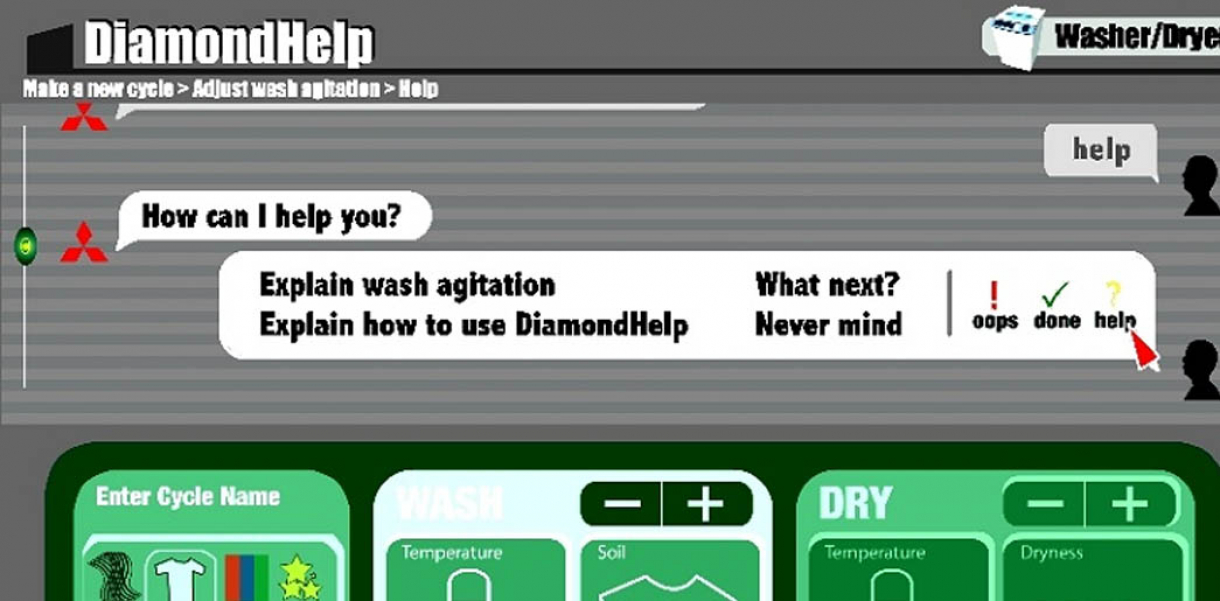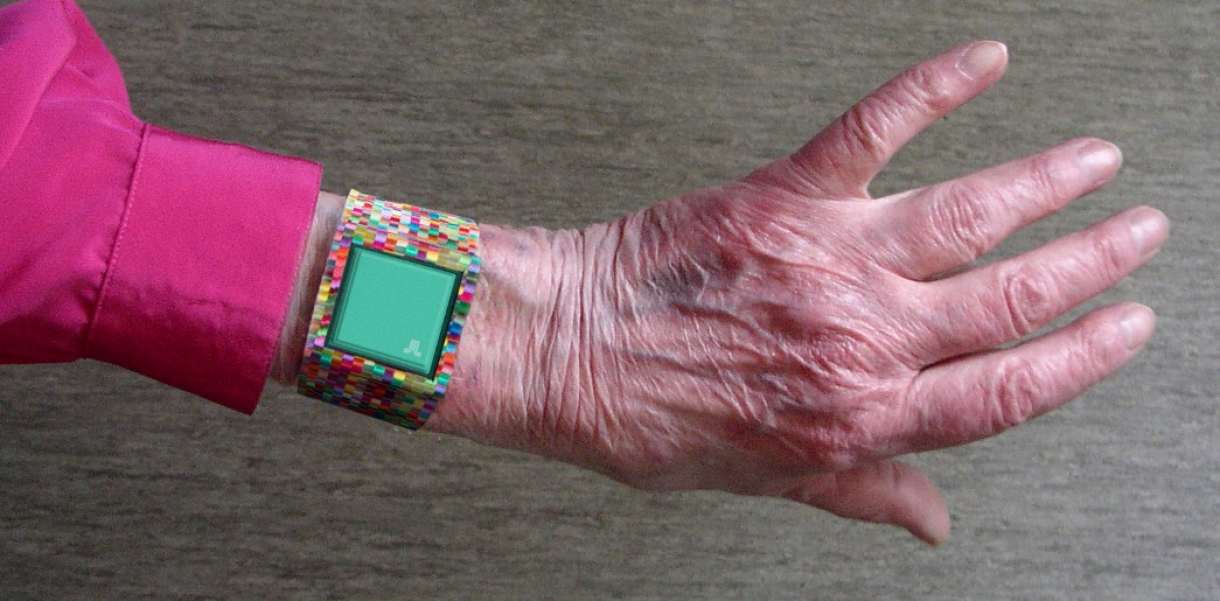Functionality and use of design
Our design has the three key elements, which are described in further detail below: separating simple and complex functions, collaborative conversation paradigm, and consistency across products.
How did this design improve life?
Ordinary people already have great difficulty using the advanced features of digitally enhanced household products, and the problem is getting worse as more features are continually being added. Furthermore, this usability problem cannot be solved using only the tiny displays and controls typically found on home appliances. By using a home network to share a larger and more powerful display, we can provide a new type of collaborative interface in which the product actively helps the user.
Drawbacks of life improvement
By making it possible for people to actually use more of the new features of digitally-enhanced home products, DiamondHelp could postpone a "good" crisis in the marketplace which forced manufacturers to stop adding features unless they were really necessary.
In particular, some appliance designers have started to call for "radically simple" designs, i.e., getting rid of _all_ "features". However, we don't think this extreme position is viable. For example, it is not acceptable to say that, since programming, a thermostat is too complicated, you just shouldn't do it. The programming features of a thermostat are extremely valuable for saving energy. In general, even though some of the feature explosion in home appliances is clearly superfluous, there are many features which, like thermostat programming, are inherently complex, but also quite valuable.
DiamondHelp in sense allows us to have it both ways, i.e., to keep the everyday use of the appliance simple, while still having well-supported access to the occasionally used complex features.
Research and need
1. Separating simple and complex functions
The starting point of our design is the realization that there is an important difference between the simple, commonly used functions of an appliance and all the other features (typically involving programming and customization), which are more complex and only occasionally used.
To give a familiar example, the problem with TV remote controls is not the standard six control buttons (on/off, volume/channel up/down), but rather the other 25 buttons (and the little slide-out panel with 15 more!), which no one knows how to use and which, if you hit it one accidentally, causes the TV to go into some unfamiliar mode that is hard to get out of.
Another example, shown in the video, is a programmable thermostat. The simple, everyday function is to change the current desired temperature (just as with a non-programmable thermostat). Programming the temperature settings for a whole week to match the pattern of family activity is much more complex, and only occasionally done.
The DiamondHelp design is aimed at complex functions, which is where we believe there is a real need for new ideas. Our basic methodology is to move all of the complex functionality "off" the appliance, using the home network. Controls for the simple functions, however, can and should remain on the appliance and be designed according to the best current ergonomic principles.
2. Collaborative conversation paradigm
Collaboration is a process in which two or more participants coordinate their actions toward achieving shared goals. DiamondHelp is rooted in the view that collaboration (between a person and a product) is the most appropriate paradigm for accessing the complex, seldom-used functions of a product.
Collaboration is a very broad and flexible concept. Depending on the knowledge of the person about the particular product feature being used, DiamondHelp interactions may range from what might be called intelligent computer-aided instruction (tutoring) to intelligent assistance (delegation).
Collaboration also implies mixed initiative: DiamondHelp can provide detailed step-by-step instructions and demonstrations when appropriate, but also allows the user to do things by himself when he wants to. At a very concrete level, this means that in DiamondHelp, the user is free at any point in the conversation to directly manipulate the lower half of the window; there is never the kind of lock-out that happens with standard dialogue boxes.
Finally, most collaboration between humans involves conversation. To express and reinforce the collaborative conversation paradigm in DiamondHelp, we adopted the scrolling speech bubble metaphor often used in online chat programs. This graphical metaphor also naturally extends to the use of speech synthesis and recognition technology in the future.
3. Consistency across products
One of our main design challenges in DiamondHelp was to accommodate what is inescapably different about each particular appliance while preserving as much consistency as possible in the collaborative aspects of the interaction. If someone knows how to use _one_ DiamondHelp appliance, they should know how to use _any_ DiamondHelp appliance.
We addressed this issue through a unique combination of the collaborative conversation and the conventional direct-manipulation interface paradigms, as shown in the three attached figures. The top half of each of these screens is the same distinctive DiamondHelp conversational interface. The bottom half of each screen is an appliance-specific direct-manipulation interface. Dividing the screen into two areas is, of course, not new; our design contribution is the specific graphical elements and interaction behaviour shown in the video.
The top half of every DiamondHelp screen is thus a conversation ("chat") between DiamondHelp (the product), represented by the Mitsubishi three-diamond logo on the left and the user, represented by the human profile on the right. All communication between the user and the product takes place in these bubbles; there are no extra toolbars, pop-up menus, etc.
Designed by
Charles Rich, Candace L. Sidner, Neal Lesh, Andrew Garland & Shane Booth - USA






